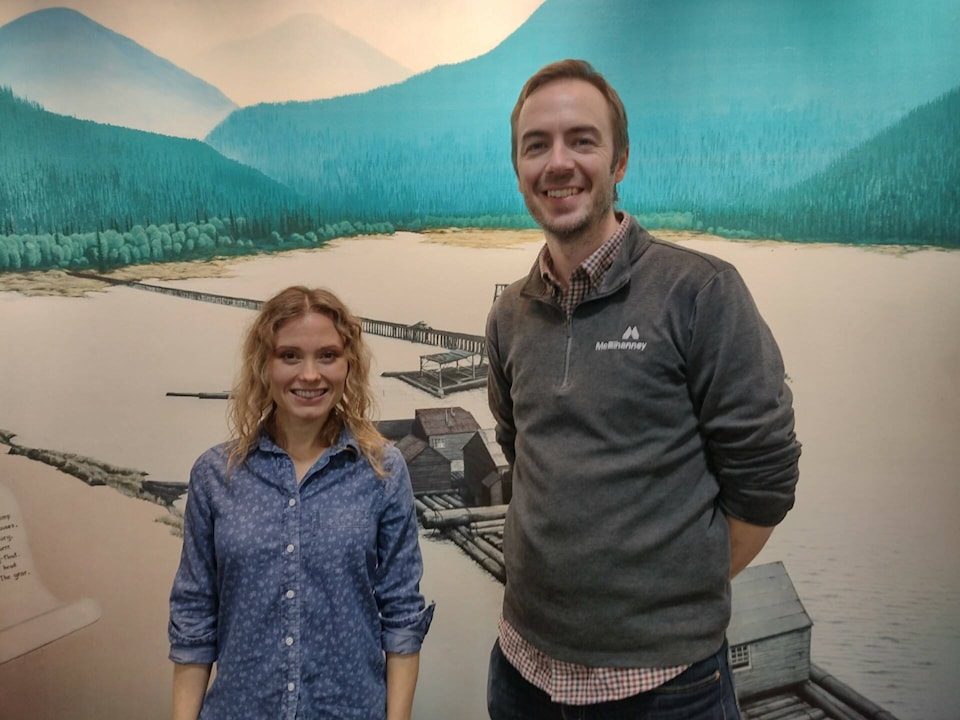Written by Debra Lynn
The Village of Port Alice hosted a presentation on Feb. 22 by McElhanney Ltd., a multidisciplinary geomatics, engineering, geospatial, environmental, planning, and landscape architecture consulting firm based in Vancouver.
It was in response to a grant from The Active Transportation Network Plan grant program that is managed by the BC government’s Ministry of Transportation and Infrastructure. Approved in 2023, the grant is for 50 per cent of the total project cost of $30,000 that aims to develop an active transportation plan for Port Alice. The Village’s 50 per cent share ($15,000) will be funded by the Gas Tax Reserve.
Mathew Browning, a transportation planning engineer who had a career in infrastructure development and design for accessible communities, led the presentation. His partner, Bailey Walsh, also an infrastructure planner with McElhanney, was on hand to record residents’ input.
Browning defined the parameters of an ATP as anything that is human powered, dealing mainly with walking, biking and mobility issues, essentially “anything that is not a car.” Types of projects can include new bike lanes, trails, stairways, sidewalks, pedestrian crossing lights, curb extensions, street lighting, painting, signage and even the development of special programs such as walking groups.
This was the first stage of a three-stage process. It begins with an evaluation of where the community is now and identifying challenges and wants. In the second stage, McElhanney will generate some options that make sense, based on their experience, to respond to those concerns. After input from the community, they will determine what will work and what will not. At stage three, McElhanney will outline an active transportation plan that lists priorities and ways to get them implemented.
After a walk around the community and an evaluation via Google, Browning and Walsh found some issues residents might like to address. One of them was discontinuous infrastructure which can compromise pedestrian safety: a sidewalk that ends at the school drop off area and starts again further down the hill. In another part of town, a stretch of sidewalk is followed by a patch of grass, then a painted crosswalk with stop lines that are too close leading to another patch of grass and then a steep flight of stairs—is a rather hazardous route to get to the “health clinic.”
Later in the meeting the discussion was opened to the floor. The following are some of Port Alice’s unique characteristics and transportation challenges that group identified.
Brian Grover commented that people here don’t tend to embrace walking and cycling because of the bears and cougars. Browning suggested improved lighting to minimize danger.
The North Island Gazette added that the steepness of the hills is also a deterrent. The group then discussed a variety of solutions from Browning’s suggestion of developing special maps to outline sections where the incline is more gradual, to the Gazette’s contemplation of electric cart rentals for bringing groceries uphill.
Bonnie Danyk brought attention to the road from the Legion toward the gas station that is very narrow. As a driver, she finds it difficult to know what to do if there is a cyclist on the road. She doesn’t want to get too close and shove them into the ditch, but she doesn’t want to go into the lane for oncoming traffic.
Grover said he doesn’t mind cycling on that road when there is regular traffic, but says, “the logging trucks are a bit hairy.” He expressed the same concern for the road to the mill.
Browning stated that these issues should be noted so that, whenever the road is upgraded in the future, these changes can be easily incorporated.
Another concern, suggested by Louisa Moore, was washroom facilities at the entrance to town. Browning added that rest spots, benches, washroom facilities, garbage cans can be easy solutions for enhancing a transportation plan.
Grover brought up some very large detours—two blocks each way—around Strata 1. He said there was once a path going through the complex many years ago, but it was closed off. He thinks that it should be reinstated to save time for pedestrians and enliven the area.
Other residents will soon be able to add their input the discussion when an ATP survey will be activated at the village’s website, portalice.ca.
